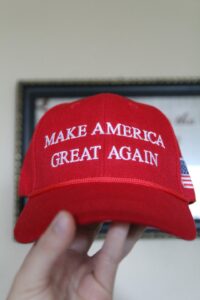**Trump’s Stock Market Performance Lags Behind Predecessors in Election Year**
The stock market’s performance during an election year is often seen as a barometer of public confidence, both in the incumbent administration and the overall health of the economy. For young people, particularly those just beginning to invest or considering their future careers, understanding these trends is crucial. Historically, a strong market performance leading up to an election can boost an incumbent’s chances, while a weak one can signal trouble. When looking at the current landscape, Donald Trump’s performance in 2020 presented a unique scenario, especially when compared to previous election years, particularly that of George W. Bush in 2001.
Data reveals that the start of 2020 saw the weakest election-year market performance for a sitting president since 2001, the year George W. Bush began his first term. While the S&P 500 and other major indices eventually saw growth over the course of 2020, the initial months were marked by uncertainty and volatility. Several factors contributed to this, including growing concerns about global trade tensions and the emerging threat of the COVID-19 pandemic. These anxieties rippled through global markets, directly impacting investor sentiment and contributing to market fluctuations. Comparing this to the start of Bush’s election year, both periods faced distinct economic headwinds. Bush inherited a market already showing signs of decline after the dot-com bubble burst, while Trump navigated a rapidly changing global landscape dominated by pandemic fears.
Understanding these historical parallels offers valuable insights for young investors and future professionals. Market volatility is a constant, and the interplay of economic, political, and global factors can significantly impact market performance. Analyzing past trends, such as comparing Trump’s 2020 performance to Bush’s in 2001, helps to contextualize current market conditions and fosters a deeper understanding of the complex forces at play. While the stock market’s performance isn’t the sole indicator of a president’s economic success or failure, it provides a valuable snapshot of investor sentiment and can serve as a useful tool for understanding broader economic trends, which is vital knowledge for anyone entering the workforce or starting their investment journey.





